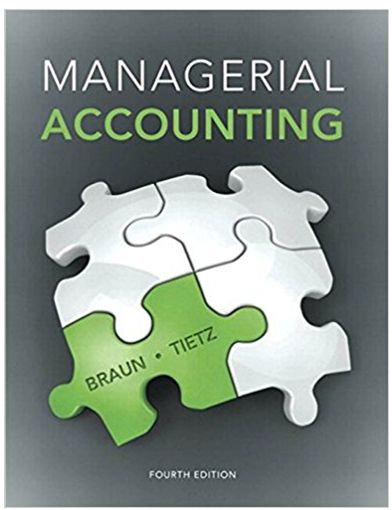1. Sales forecast: January: 2,100 units; February: 2,900 units; March: 3,300 units; April: 3,500 units. The unit...
Question:
2. End of month inventory must equal 60% of next month's sales. The inventory at the end of December 2015 was 1,260 units.
3. The following are the expected costs for direct materials, direct labor and manufacturing overhead:
.png)
A. Direct materials are paid 30% in the month incurred and 70% in the following month.
Account payable for materials as of December 31, 2015 is $6,100; this amount will be paid in January 2016.
B. Direct labor is paid in the month incurred.
C. Overhead costs are paid in the month incurred. Fixed overhead includes depreciation of $2,100 per month.
4. Selling costs are sales commissions: $1.50 per unit sold; shipping costs: $1.20 per unit sold. Administrative costs per month are: salaries: $10,500; rent: $1,500; depreciation: $2,000. All costs are paid in month incurred.
5. The company plans to buy equipment costing $5,000 in January.
6. The cash balance as of December 31, 2015 is $11,100. The company borrows money only if the cash balance falls below $2,000 at the end of the month. The company has a revolving credit with US Bank to borrow in increments of $1,000 at the beginning of each month at interest of 12% annual rate. The company repays interest at the end of each month and principle (or portion) at the end of the month when they have the resources to do so. As of December 31, 2015 the company has no outstanding loans.
Required:
Based on the information given, prepare the following budgets for each month of the first quarter of 2016 and the quarter totals:
Sales Budget, including a schedule of expected cash collections;
Production Budget (in units);
Direct materials
Accounts receivables are debts owed to your company, usually from sales on credit. Accounts receivable is business asset, the sum of the money owed to you by customers who haven’t paid.The standard procedure in business-to-business sales is that...
Step by Step Answer:






